Prevent damage to your home and plumbing system by taking steps to avoid frozen pipes and drains. Learn how to thaw them safely to save money and avoid the hassle of fixing burst pipes. Act now and protect your home from the damage caused by frozen pipes and drains. Let’s go on!
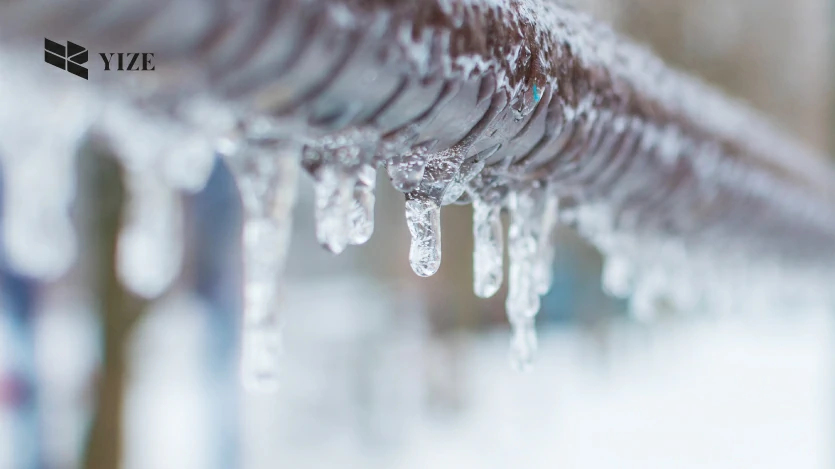
How does a drain pipe freeze?
A drain pipe freezes when the water inside the pipe freezes, which can cause the pipe to expand and burst. This can occur in various types of drains. These include shower drains, modern shower drains, and floor drains.
When water from a shower runs through a drain, it can cool down in cold temperatures. If the water isn’t drained enough, it can freeze inside the pipe and cause the pipe to expand.
The design of modern shower drains prevents clogs and improves drainage. They can still freeze if the water in the pipe isn’t moving fast enough. Floor drains are often found in basements or garages. They are susceptible to freezing if they are not used and exposed to cold air.
To prevent drains from freezing, it’s important to ensure that the pipes are well insulated. Also, the water is moving through them. Also, it’s a good idea to keep the area around the drain warm by using a space heater or adding more insulation. If a drain pipe does freeze, it’s important to thaw it as soon as possible to prevent it from bursting.
There are several potential causes behind the freezing of the pipe. While a decline in temperature is the most likely culprit. Many other factors could also be to blame, including the following:
• Poor insulation all around the pipe sheathing
• a drain pipe that is not covered by water that is only covered.
• There is a tiny split within the drain pipe.
How to thaw frozen drain pipes
Drains are less likely to freeze than the lines that bring water to homes. But this problem can happen if the drains are inside a cabinet. Or enclosure that is flush against an outside wall. If your drain freezes, you can do the following things to get the water flowing again:
Table Salt
When salt (NaCl) gets into water, the water’s freezing point goes down. Choose one of the following options:
• Pour down the drain and leave to sit for a while (it will take some time to work)
• Pour the down the drain the solution. Which you get when you mix a half cup of salt with a half gallon of boiling water.
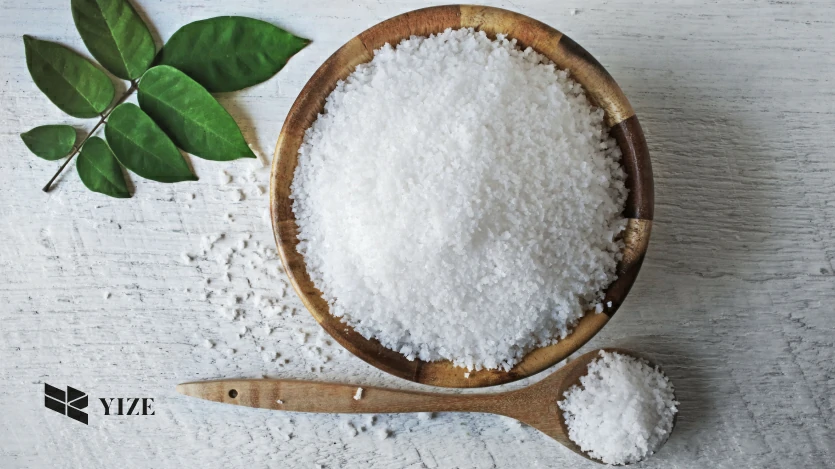
Turn Up the Heat
Raise the temperature on your thermostat. Then open the cabinet doors to let warm air flow through and warm up the pipes. Even though this method may take a few hours to work, it is one of the safest ways to unclog a frozen drain.
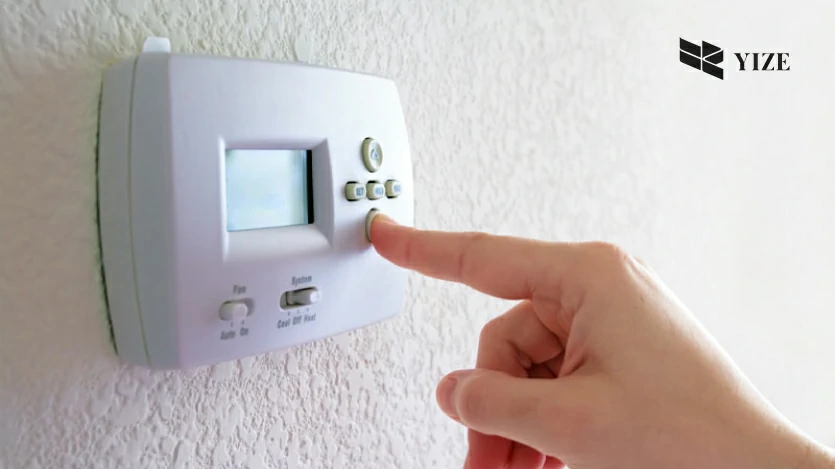
Space Heater
You will need to open the cabinet door and point a space heater toward the frozen pipe. The heater must not be inside the cabinet. Because of this, either the heater or the things around it could get too hot and start a fire.
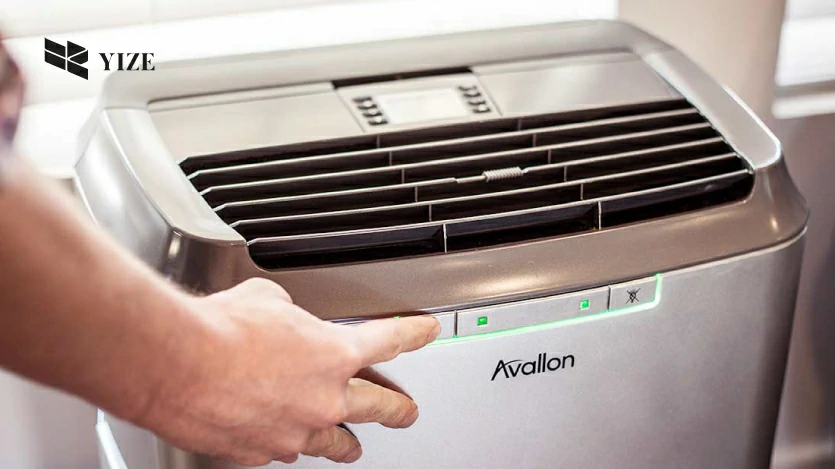
Heat Lamp
You can use the same heat lamps used in terrariums or grow plants indoors to get the ice out of your drain pipes. Point the light at your pipes and keep it there while you wait.
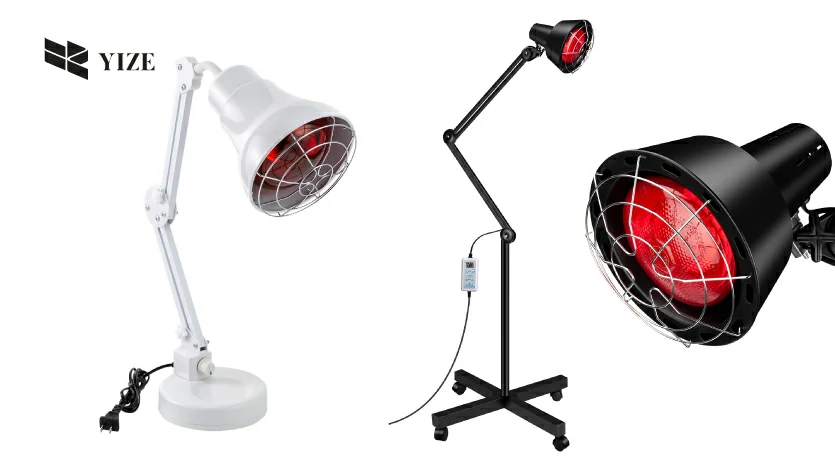
Electric Heat Tape
The “tape” in question is actually a wrapping that looks like a ribbon and has heating components inside. Wrap it around the pipes and heated with a thermostat.
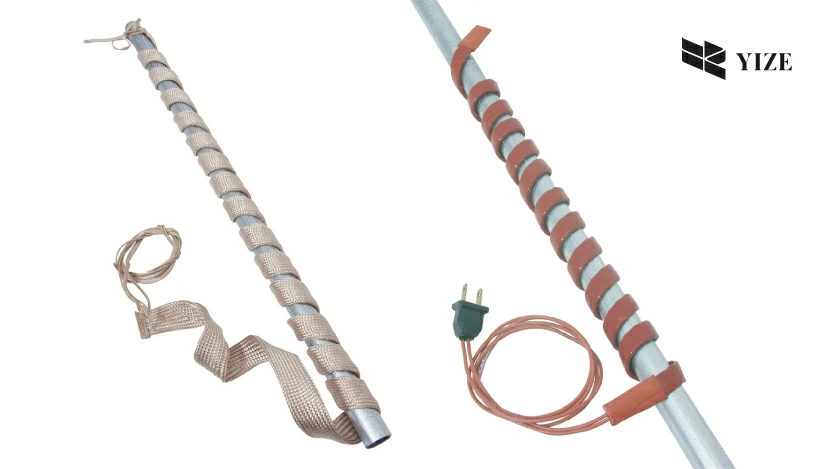
Hair/Blowdryer
Use a hairdryer to warm up the pipes until enough of the ice has melted to let water flow through them. After that, turn on the warm or hot water and leave the faucet open so a stream of water can finish melting the ice.
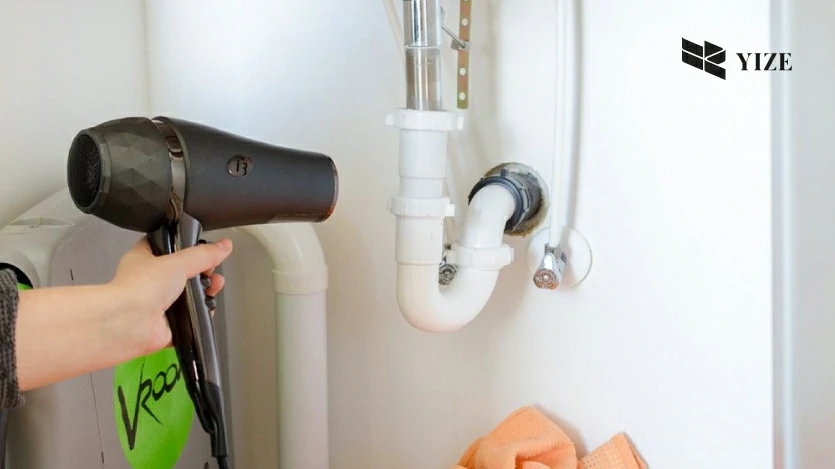
Heating Pad/Hot Packs
If you have a heating pad or hand or foot warmers, you can put them in the P or S trap. Then turn the temperature up to medium until the water starts to flow. Then, turn on the hot water faucet in the sink and let it run for about four or five minutes to clean the rest of the drain.
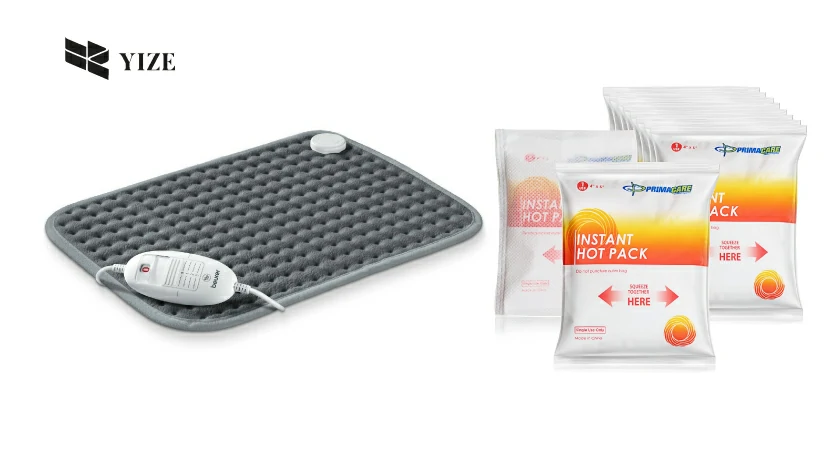
Hot Towel
Wrap the pipe in a towel that has been soaked in hot water and then squeeze it out. As needed, do it again. The towel’s heat will melt the ice in the pipe. As with the other methods, once the water starts to flow, let a steady stream of warm water flow. Do it for four to five minutes.
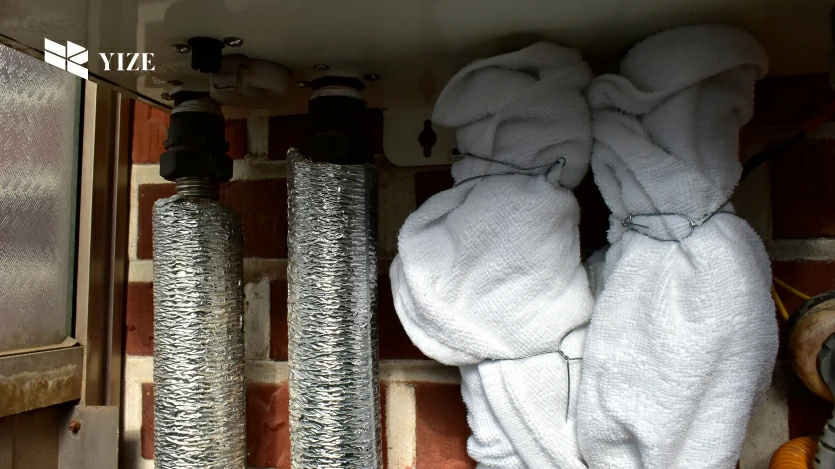
Pour boiling water down the drain pipe.
If you don’t have the right electrical tools, you could try pouring boiling water down the pipe.
Still, you have to be very careful with this step because the boiling water can shoot back up the pipe. This risk will depend on how far the ice blockage has made its way down the pipe.
Whether you use a pot or a kettle to bring water to a boil, there needs to be enough water. You will need more to melt the ice and defrost the drain completely.
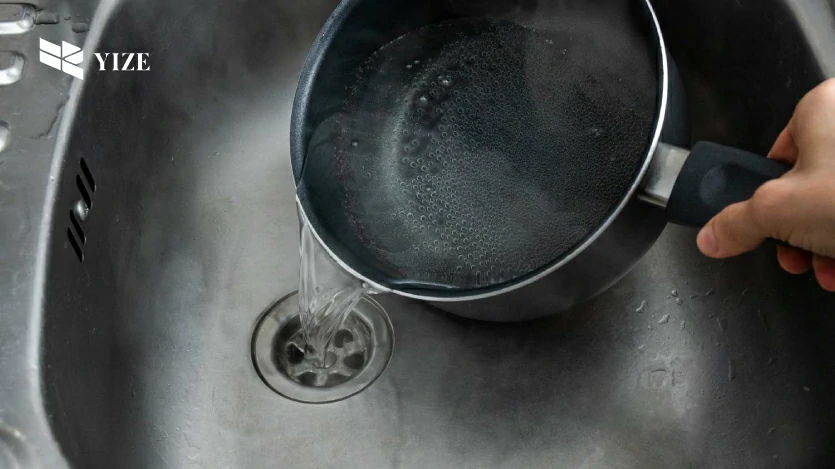
You only need to do this process twice. If the pipe is very clogged, the boiling water might not be able to break through the whole block of ice. If this happens, the extra water will freeze to the blockage, making it even harder to clear.
Prevent water pipes and drains from freezing.
There should be ways to keep pipes from freezing in the first place. You can protect your pipes from damage caused by freezing weather by doing the following:
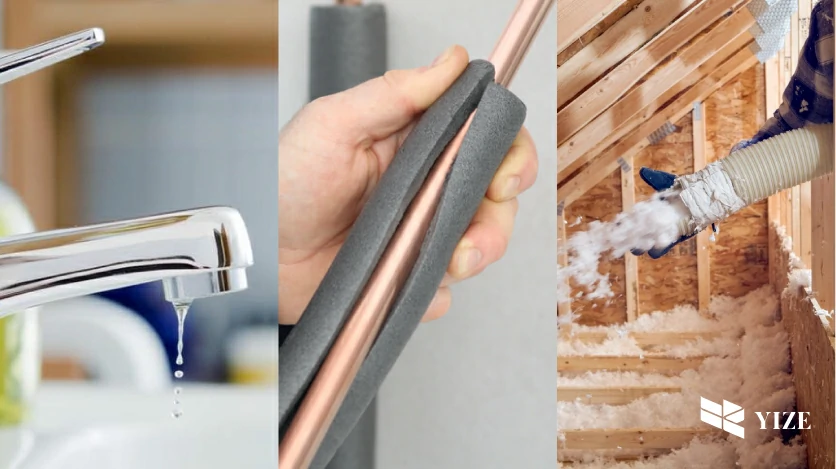
• When it looks like the temperature will drop below freezing, open one or more faucets. So that a trickle of water keeps flowing.
• Keep the cabinet doors open so warm air can get in (for cabinets on exterior walls).
• You should insulate any exposed pipes. Those outside, in your home’s crawl space, garage, basement, or attic.
• Put pipe sleeves, heat tape, or heat cables should work on the water pipes that are out in the open.
• In the short term, wrapping exposed pipes in a newspaper can help protect them.
• Fill in any holes or cracks in your insulation or trim that could be letting cold air in.
• Turn off the water supply. Then disconnect any garden or outside hoses, and empty any pipes that lead outside.
What to do if you know the frozen pipe has burst
If your drain pipe has completely burst, you should first turn off the main water line. The one that brings water to your property. This will stop any more damage from happening.
Turning off the main water supply will stop water from getting into the building. It will also stop it from leaking or flooding your home. As a precaution, turn off all the electricity around the pipe as soon as possible. This is the only way to make sure the highest level of safety.
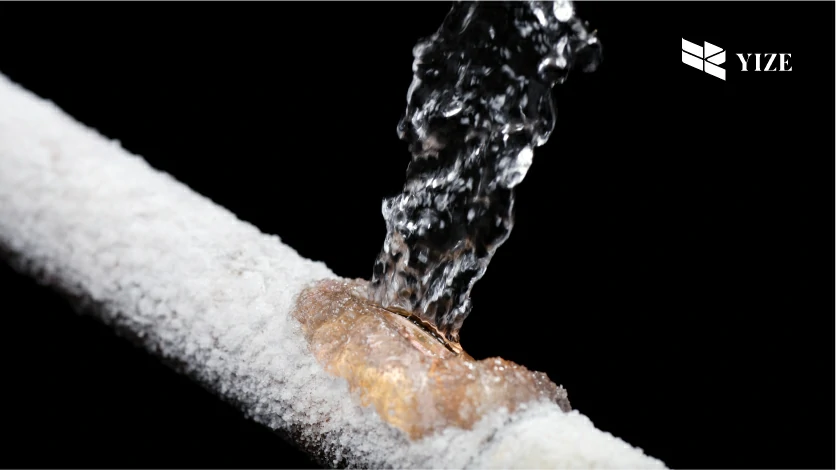
If you have broken pipes in your house, there is a good chance that water will leak everywhere. If the leak isn’t fixed, it could lead to flooding, dampness, and the growth of mold.
In the end, your best bet for thawing out frozen drain pipes is to call in a professional. If you can’t find the pipe or the frozen blockage inside the pipe, or if you don’t think you can thaw the frozen pipe without causing more damage, you should call in a professional team.
They will not only be able to fix the problem. But they will also be able to tell you how to avoid problems like this in the future.
How to Deal with Frozen Section of Your Water
If none of the faucets or spigots in your home are working, it’s likely that your main water line, which runs from the street to your house, is frozen. Water mains are usually buried and come into homes through underground openings. It is very rare for these pipes to freeze. You can find the frozen part of your water main by looking at the following:
- Check the part of the pipe that runs from the meter on your property to where you enter your home.
- Check the part of the pipe. The one that goes from the front door of your house to the point where it splits off to the different rooms.
You can use the same methods to thaw frozen water pipes as you would to thaw a frozen sink drain:
Turn up the heat. Raise the temperature on your thermostat and direct the warmer air to where your water main is. This will keep your water supply going without stopping.
Space heater for the area you place a heater for the area around you toward the frozen water pipe.
Heat Lamp: Shine the light on your pipe and wait until it gets warm (keep the light at a safe distance from the pipe).
Heat tape that is powered by electricity: Wrap this tape around the frozen pipe, and then adjust the thermostat on the tape until the pipe is no longer frozen.
Hairdryer/Blowdryer. Use a hairdryer to warm the pipe in a circle until enough of the ice has melted to let water through. Then, turn on a few faucets. Leave them open for at least four or five minutes so the moving water can melt the rest of the ice.
Turn on different faucets to melt the rest of the ice in your plumbing system. Wrap the pipe in a towel that has been dipped in hot water, wrung out, and then wrung out again. As needed, do it again. The towel’s heat will melt the ice in the pipe. Once the water starts to flow, wait for about four to five minutes like you would with the other ways.
Final Thoughts
In conclusion, unfreezing a shower drain pipe can be a straightforward process if approached with caution and the right tools. To start, turn off the water supply to the shower. Attempt to clear the blockage with a plunger or drain snake. If this doesn’t work, try boiling water or a mixture of baking soda and vinegar. If all else fails, disassemble the drain pipe, wear gloves and safety glasses, and clear the blockage manually. When reassembling the drain pipe, use plumber’s putty to create a tight seal.
Remember to work slowly and carefully, as you do not want to damage the pipes. If you feel unsure about the process, it may be best to call a professional plumber to handle the job. By following these steps, you can safely and effectively unfreeze your shower drain pipe, ensuring a smooth and properly functioning shower for years to come.
